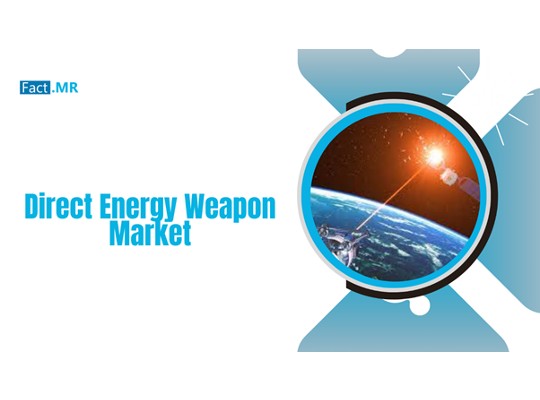The latest industry analysis by Fact.MR forecasts that the global market size for direct energy weapons (DEWs) will reach US$ 8.43 billion by 2024, with sales projected to grow at a significant CAGR of 18.6%, reaching US$ 46.4 billion by 2034.
Various countries are prioritizing direct energy weapons as part of their military modernization efforts due to their advantages over conventional kinetic weapons, including speed, precision, and cost-effectiveness. Additionally, escalating geopolitical tensions and the changing nature of warfare are expected to drive exploration into advanced weapon systems like DEWs.
The rise of asymmetric threats such as unmanned aerial vehicles (UAVs) and drones is expected to fuel the demand for DEWs for defense against unconventional threats. Furthermore, DEWs offer economic benefits in the long term due to reduced ammunition requirements, lower operational costs, and decreased logistical burdens compared to traditional weapon systems.
North America is anticipated to capture a 40.2% share of the global market revenue by 2034. In China, demand for DEWs is projected to grow at a CAGR of 19.5%, reaching a market value of US$ 8.11 billion by 2034. Sales of armored vehicles are also forecasted to increase at a CAGR of 18.7%, reaching US$ 12.67 billion by 2034.
Aside from military applications, DEWs have potential non-lethal uses in perimeter security, crowd control, and law enforcement, driving interest in both civilian and military sectors. Moreover, the growing interest in space exploration and defense is expected to boost the demand for DEWs for space-based applications like space debris mitigation and satellite defense.
Commercial opportunities for DEWs extend beyond military applications into areas such as border security, maritime security, and counter-drone systems. Consequently, significant investments from both public and private entities are being made in DEWs.
Key companies profiled in the market include Lockheed Martin Corporation, L3Harris Technologies, Inc., Thales Group, Elbit Systems Ltd., BAE Systems, Raytheon Technologies Corporation, Honeywell International Inc., Moog, Inc., Rheinmetall AG, and Boeing.
Factors augmenting the growth of the DEW market include increasing defense expenditure and integration of advanced weapon systems into vehicles. However, stringent regulations on R&D activities may hinder market growth.
Startups are expected to play a role in the market by driving constant technological advancements for improved efficiency of DEWs. Regionally, North America and China are highlighted for their market potential, with the United States and China being key players due to their significant defense spending and ongoing military modernization efforts.
Technologically, high-energy laser weapons are widely used due to their low power consumption, easy installation, and capability to destroy enemy electronic systems. Ground defense emerges as the most rewarding application segment, with substantial investments driving demand for DEWs in this area.
Prominent manufacturers are actively involved in new developments, supply chain management, and maintaining product quality. Collaborations and partnerships are also common strategies employed by key players to secure their position in the market.
The DEW market is segmented by technology (lasers, microwave, particle beams), range (less than 1 mile, more than 1 mile), platform (armored vehicles, ships & submarines, unmanned systems, aircraft systems, handheld systems), application (ground, naval, airborne), and region (North America, Europe, East Asia, Latin America, Middle East & Africa, South Asia & Oceania).













